
views
Preparing to Dig

Check the legal and zoning requirements. This is the step where we tell you to make sure you are legally allowed to dig your bunker. If you excavate illegally and someone finds out, you will face a fine and have to fill it in, or your council will fill it in and charge you for the privilege.
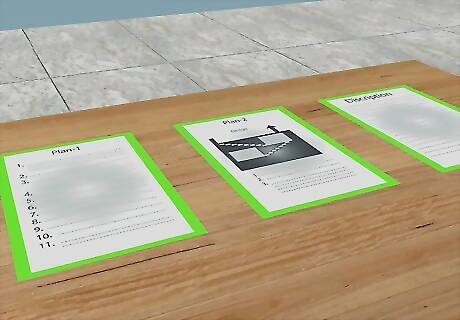
Plan and research every aspect in great detail. The below stages are listed in order that they occur, but each stage needs to be considered before the project is started.
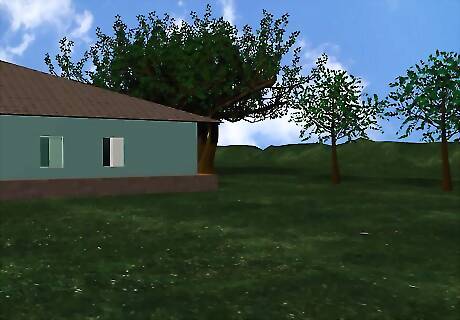
Think carefully before committing to a bunker under your home. Digging a bunker under a home has advantages and disadvantages. Advantages include that the entrance to the bunker can be concealed, and it is easier to supply electricity, etc. Disadvantages are many. Messing with the foundations of a house can be disastrous. Access will likely be poor, perhaps preventing heavy machinery which will make things slow and difficult.Dig a Bunker Step 3Bullet1.jpg Excavated soil may be more difficult to remove, or may create a messy trail through your home.Dig a Bunker Step 3Bullet2.jpg You may have to dig through a concrete floor, which requires heavy equipment which will need to be rented. Pockets of natural gas, radiation, and mold all may be encountered during the construction of the bunker, and this is not ideal with your home is directly above. You do not want to poison your family as they sleep, or cause the whole house to blow up as methane escapes. Damp and mold are also unwelcome.Dig a Bunker Step 3Bullet3.jpg Generally, it's better to choose a site distant from any building. The best place is away from any trees, as their roots will make things harder.Dig a Bunker Step 3Bullet4.jpg

Consider soil. Soil type also needs to be considered. Sandy soil is more prone to cave in. Clay is less likely to collapse. Rocky soil is difficult to dig out.

Plan for the cold. Depending upon where you are in the world, you may have to think about what effect cold weather will have on the ground. When the ground freezes and thaws, the soil expands and contracts. This may lead to collapse.

Get to know your landscape. Ideally, you want to know what is beneath your feet before you start. Will you hit bedrock straight away? Where is the water table? You do not want to return the next day to your site to find it flooded. Do your research, know your soil. The site also needs not to interfere with any underground cables, pipes, etc. This is another reason to build away from structures. Seriously consider getting a professional involved to advise you about a site.Dig a Bunker Step 6Bullet1.jpg
Digging the Bunker
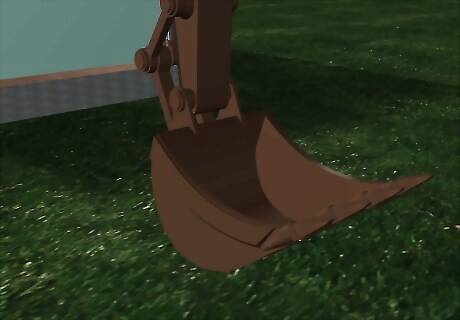
Consider using heavy machinery. You can use a backhoe or excavator to excavate out a large hole, then place or build a structure inside the hole, and then finally use the excavator to bury the structure again. Mini backhoes can be hired if you want to do it yourself, or the larger ones can be hired with an operator (e.g. for the day). Dig down as far as you want, and keep the excavated soil close by, but far enough away from the hole so that it does not fall back in. Remember the pile of dirt will become very large very quickly. Soil in the ground is compacted, and when it is dug up it occupies more space.Dig a Bunker Step 7Bullet1.jpg When you have dug as deep as you require, make sure the surface is level. It is easiest to place a manufactured structure in the hole, and a shipping crate is a readily available and passable for this purpose. They are not too expensive, but you may be surprised how much they cost, even old ones. However, it will need to be lowered into the hole, and this will require more heavy machinery.Dig a Bunker Step 7Bullet2.jpg An alternative is to build your own structure in the hole. The floor needs to go down first. Take a while to plan the materials at this stage, it can mean the difference between damp and moldy and comfort. Cemented bricks or concrete blocks are a cheap and strong material for the walls. Using wood for the structure is not desirable, they will rot if you use untreated wood, and treated wood releases toxic chemicals that are unsuitable for an underground bunker. Wood is also less permanent and less strong than brickwork or cement blocks.Dig a Bunker Step 7Bullet3.jpg
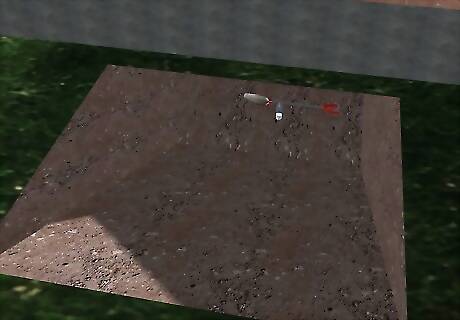
Go without machinery if desired. The second, slower and more dangerous method is to dig out the bunker from the entrance and shore up the tunnels as you go. This is not recommended unless you really know what you are doing. Try to always have a phone, (call for help if you survive and are then trapped by a cave in), and a light. Leaving an emergency shovel and water to hand may save your life. This kind of digging can be a nightmare and can be very slow. It is also much more likely to lead to collapse. The ideal plan for this kind of bunker is a large circle shape. If one part collapses you can still get out round the other side. You need to take great care with how you shore up the walls and roof, with planks at first, but ideally solid brickwork.Dig a Bunker Step 8Bullet1.jpg Scaffolding poles can be used to prop up the ceiling, but this approach should not be trusted to secure larger rooms, only passageways. Use brick pillars instead of scaffolding poles for a more permanent measure.Dig a Bunker Step 8Bullet2.jpg If you hit solid rock, you should have chosen a better site. You need heavy equipment to break it up, or you can drill a hole and place explosives and then try to blast it out bit by bit (not recommended). You can hammer wooden wedges into cracks to try to break pieces off. If you live somewhere cold, try pouring water into the cracks and then leaving it overnight. The water expands when it freezes and may break pieces off.Dig a Bunker Step 8Bullet3.jpg
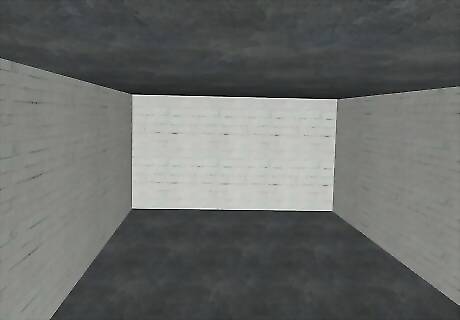
Consider other finishing touches and safety measures. Water-proofing the bunker. A simple plastic sheeting laid below the floor, and similar measures for the walls and roof may be needed to prevent water and damp seeping in. Dig a Bunker Step 9Bullet1.jpg Sound-proofing of the roof and walls. This way your bunker will remain undiscovered even if loud music is playing and it is near the surface. You do not want to live in fear and have to whisper.Dig a Bunker Step 9Bullet2.jpg Concealing and securing the entrance. This is more difficult if the bunker is in the middle of open ground. Consider planting quick-growing trees or landscaping the ground around to look natural. Another idea is to make the entrance look like a manhole cover. Another option is building a shed or other small structure on top of the entrance. An entrance is much more easily hidden inside a building, below the floor.Dig a Bunker Step 9Bullet3.jpg Power. A generator, or electric supply from the surface. Ventilation. In deeper installations, air needs to be circulated with vents and fans. Do your research. Dig a Bunker Step 9Bullet5.jpg Water supply and lavatory. Main water supply may be interrupted during a disaster. Look into rainwater collectors and water purifiers. To have a sustainable toilet within the bunker, a septic tank and leach field will be needed, but the tank needs to be emptied and the leach field rested at intervals (years). Another option is the composting toilet.


















Comments
0 comment